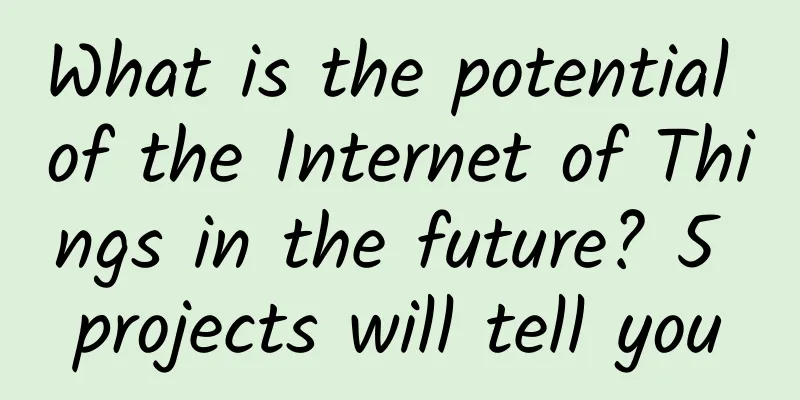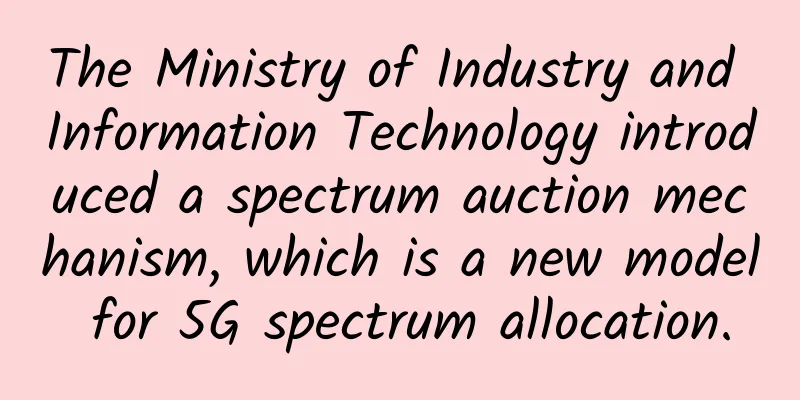What is the potential of the Internet of Things in the future? 5 projects will tell you

|
We’ve all heard the predictions that the Internet of Things will become an unstoppable trend by 2050, with countless objects and countless dollars. However, with Gartner predicting that the use of connected “things” will reach 25 billion worldwide by 2020, people have begun to pay close attention to the opportunities and challenges that the advancement of the Internet of Things will bring to enterprises. This is especially true in China, where research by ABI Research shows that the country’s Internet of Things service revenue is growing faster than any other major country and will exceed US$41 billion in 2020. But these predictions alone don’t tell the full story. To truly unlock the potential of the Internet of Things, you must overcome data challenges, which are even more important than solving problems with the “things” themselves. The best example of this challenge is the "last mile" data problem, such as how to extract data from devices or remote platforms and interpret it for improved productivity and optimal performance. Whether it is a connected home or an industrial-grade solution, after the data is collected, it is often difficult for people to display the information in the data in an easy-to-use way for exploration.
To realize the full potential of IoT analytics, you should consider the following five things: 1. Really see and interact with data Think back to when Steve Jobs first introduced the iPhone. He provided a reason for the large touchscreen: every app needed its own user interface. A similar reason applies to analytics. Every question we ask of data requires its own chart and visualization; the explosion of sensor data that forms the foundation of the Internet of Things requires even more charts and perspectives. Unfortunately, most IoT applications use one-size-fits-all views, or "closed-end dashboards." They serve no purpose other than answering a set of predetermined questions. These tools are far from flexible enough to meet the needs of users. “Drillability” is critical to the usefulness of IoT data. For example, you might be able to use data from a failed engine for an IoT application to predict the frequency and type of future failures. But what if you want to see the specific component that failed? To answer this very natural follow-up question, interactivity and sharing capabilities are essential. Ideally, users engage in casual yet deep conversations with their data—and other data explorers—so that everyone can discover the arrangements and patterns that drive change. 2. Combination can improve data quality Closely related to these deeper questions is the second key factor for IoT success: integration. Interactive data analysis can provide answers, as can the combination of IoT data with other contextual information. Let’s start with a consumer example, such as combining Fitbit data to explore potential correlations between fitness regimen and sleep patterns. Now, imagine finding enterprise-level insights by blending disparate data. Embedded sensors in jet engines can help predict when an engine will need maintenance. It can prevent failures, save billions of dollars, and even save lives. When combined with other information, it can also help us make better budgeting decisions for each product or region. 3. Iteration and Optimization We live in a world where the phrase “best data” is increasingly an oxymoron. No matter how well your data is structured, it’s likely stored in data sources you can’t connect to, is missing key elements, or isn’t in a format that supports deep analysis. These shortcomings also apply to IoT applications, especially without consensus on standards that support device interoperability. To avoid incomplete data paralyzing your business, you must iterate to find the right answers. This is especially true for companies that don’t have large volumes of data to mine. Some organizations are focusing on projects that use simple sensor-based data streams to drive simple insights and enable early adoption of analytics. These small initiatives have a lower barrier to entry and help build momentum for larger challenges. During the iterative process, you discover that “good enough” data is often sufficient to answer almost any question directionally. In addition, by better understanding data gaps, you can address process issues, improve how data is captured and ingested, and get closer to actionable insights. 4. Embrace data gravity Do you track website clickstreams or measure consumer sentiment? If so, you have external data that is being generated and stored in the cloud. Why? Reduce overhead, reduce startup time, and scale rapidly. Constellation Research predicts that by 2020, 60% of mission-critical data will be located outside the company - in just three years, more than half of data will be generated externally. What does this mean for IoT analytics? In the past, business data was generated behind internal firewalls—hence the existence of local data warehouses, administrators, and analytical tools. Now, your organization must actively adopt a platform that adapts to data gravity and performs and manages analytics where the data resides. Once you see how quickly tools hosted in the cloud can generate data, you will begin to understand data gravity. But transitioning to cloud-based BI doesn’t mean it’s a one-time thing. Remember that data gravity affects the location of analytics. So if data is stored across cloud and on-premises, analytics needs to offer a hybrid solution. Cloud services are designed to support your business needs, not an either-or solution. 5. Don’t think about tools, think about platforms IoT data often comes from different sources and is spread across multiple systems, both relational and non-relational, such as Hadoop clusters, cloud warehouses, and NoSQL databases. So if you think you can rely on one, cookie-cutter IoT tool to get you from data to insights, forget it. To achieve the best analytics results, you need a reliable data preparation and enrichment method, scalable storage, a catalog to support governance, and finally an intuitive analytics platform for end users to discover insights. Modern organizations combine the best solutions into an agile stack that can be adjusted as needs change. These needs depend on many factors, including user roles, volume, frequency of access, data velocity, etc. This stack is architected to fit the use case and forms the foundation of your data strategy. Its flexibility ultimately drives technology selection. Summarize So what’s the most important takeaway for an analytics leader or CIO preparing to implement an IoT analytics initiative? Define your platform vision. This mindset may seem overwhelming at first, but remember that you can scale the stack as needed: build on the stack’s modules to incrementally achieve your plan. Many decisions and actions are undoable, and you can correct your course as you gain more information. You’ll soon see measurable results in your platform analytics. |
<<: Compare Alipay and WeChat Pay in many aspects, which one do you prefer?
>>: Traditional routing, SD-WAN gives you a reminder
Recommend
The outbreak of 5G still cannot prevent the overall decline of the mobile phone market
In this year hit by the epidemic, sales in the mo...
Adhering to independent innovation, China Cloud Technology has deepened its roots in application delivery
[51CTO.com original article] 2021 is the first ye...
Will 5G base stations emit more radiation than 4G base stations? I finally figured it out
Despite repeated popularization of knowledge, man...
Replacing with a new one doesn’t work? Learn how to adjust the wireless router signal
Whether it is Tieba, Weibo or the discussion area...
8 predictions for the development of network technology in 2017
The Internet is evolving at an unprecedented pace...
Huawei grandly releases the Intelligent Micro Module 5.0 solution
[51CTO.com original article] On September 17, 202...
10 excellent log analysis tools that network administrators must have
If network administrators want to master network ...
From UML to SysML: The language journey of describing complex systems
In the vast world of systems engineering, which l...
IoT security and vulnerabilities that 5G will bring
Simply put, the Internet of Things is a network o...
Foreign netizens are discussing: China's 6G technology is coming out soon, but we are still eager for 4G
China's 5G technology has reached the world&#...
5G will be fully rolled out in 2020. Are 5G network and 5G frequency band the same thing?
After the 5G trial commercialization in 2018 and ...
XDP technology for high-performance network framework
1. Basic Concepts of XDP XDP stands for eXpress D...
[Black Friday] LiteServer: 60% off VPS in the Netherlands, large hard drive VPS/large traffic VPS monthly payment starting from 2.4 euros
LiteServer's Black Friday promotion lasts unt...
DMIT's new San Jose data center starts at $36.9/year, 15% off + free data
DMIT.io opened a new data center in San Jose, USA...
my country has built 718,000 5G base stations, and 5G+ industrial Internet is developing rapidly
Xiao Yaqing, Minister of Industry and Information...









